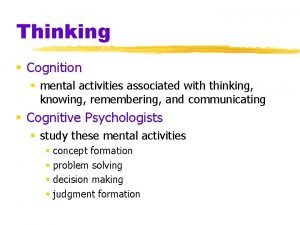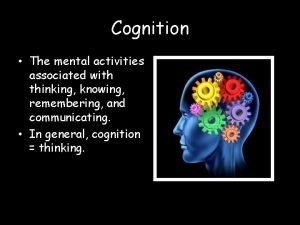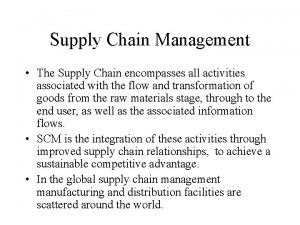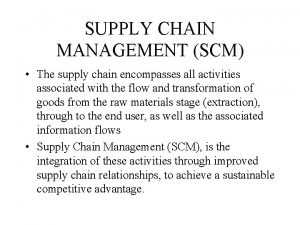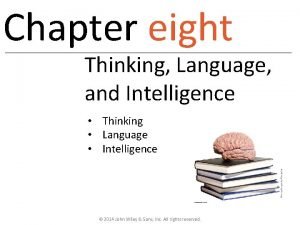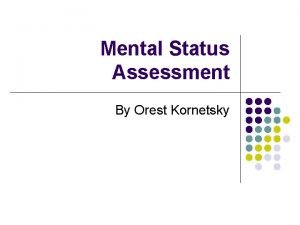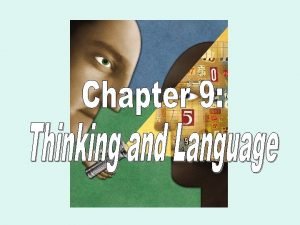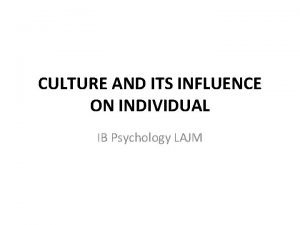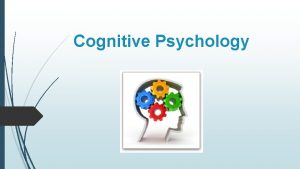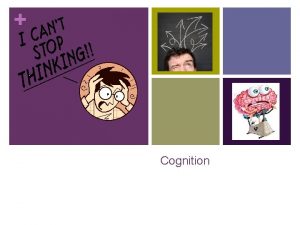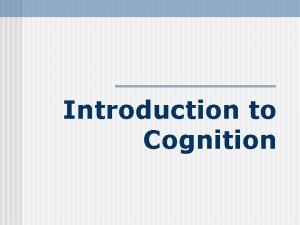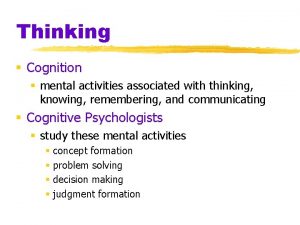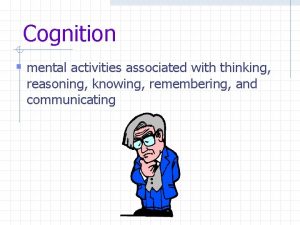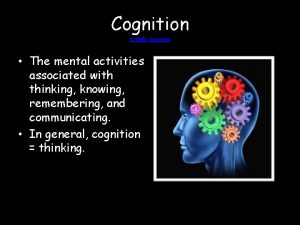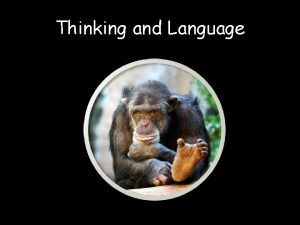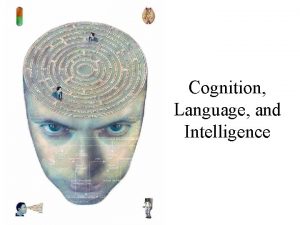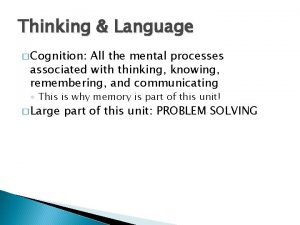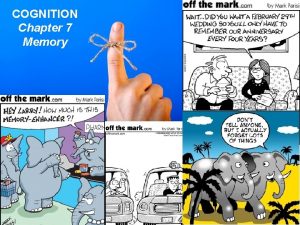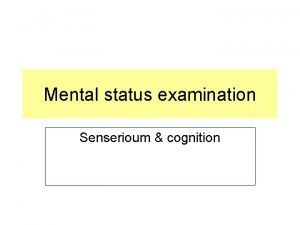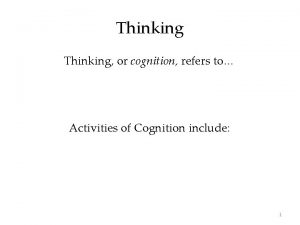Cognition All of the mental activities associated with

















- Slides: 17

Cognition All of the mental activities associated with thinking, knowing & remembering

Cognition refers to ¨How we MAKE memories ¨How we REMEMBER ¨How we FORGET ¨How we SOLVE PROBLEMS ¨How we USE LANGUAGE

Organization of LTM Concepts are arranged general to Specific.

What is a concept? ¨Mental representation of related things ¨Can be physical objects, events, attributes or ABSTRACTIONS! ¨Can be simple or complex

Prototype ¨A typical example of a concept ¨Most basic & gives us the least amount of information needed

Prototype: BIRD

Not a prototype:

Retrieving memories ¨Recognition ¨Recall ¨Reconstruction~can be distorted by adding, dropping, changing details (to fit a schema)

Serial position effect

• Primacy • Recency Effect: st Recall 1 best Effect: Recall last best

What helps us remember? ¨PRIMING ¨DISTRIBUTED PRACTICE ¨MNEMONIC DEVICES ¨METHOD OF LOCI ¨PEG WORD MNEMONIC

METHOD OF LOCI ¨ RELATE WHAT YOU WANT TO REMEMBER WITH PLACES YOU ARE FAMILIAR WITH. ¨ EX. : SOUR CREAM and MILK (refrigerator), NOODLES (nesting in bowls on counter), MUSHROOM SOUP (in the “mush” room-kitchen), DEODORANT (in drawer in bathroom),

Peg Word Mnemonic ¨ One = Bun Four = Door ¨ Two = Shoe Five = Hive ¨ Three = Tree Six = Stick ~~~~~~~~~~~ Sour Cream & Milk is one; eaten on a bun Noodles are two; squishy in a shoe Mushroom soup is three; under a tree Deodorant is four; behind the bathroom door.


FORGETTING…… ¨ FAILURE TO ENCODE ¨ DECAY OF STORED MEMORY ¨ INABILITY TO ACCESS FROM LTM ¨ RELEARNING

Inability to access from LTM? ¨Insufficient RETRIEVAL cues ¨“Tip of the tongue” phenomenon ¨Repression ¨Confabulation ¨Misinformation effect (bumped/crashed)

Interference ¨ PROACTIVE ¨ RETROACTIVE ¨ If we learn A and then B and we can’t remember B because A got in the way ¨ Proactive interference then B and we can’t remember A because B got in the way ¨ Retroactive interference
 Mental set
Mental set All the mental activities associated with thinking
All the mental activities associated with thinking What encompasses all activities associated with the flow
What encompasses all activities associated with the flow Encompasses all activities associated with the flow
Encompasses all activities associated with the flow Name
Name Mental health and mental illness chapter 20
Mental health and mental illness chapter 20 Jeopardy mental health
Jeopardy mental health Chapter 8 thinking language and intelligence
Chapter 8 thinking language and intelligence Loose thought process
Loose thought process The statement of cash flows helps users
The statement of cash flows helps users Group these activities into indoor and outdoor activities
Group these activities into indoor and outdoor activities Primary and support activities
Primary and support activities Primary and secondary activities
Primary and secondary activities Definition of telegraphic speech in psychology
Definition of telegraphic speech in psychology Cognition mse
Cognition mse Mse in counseling
Mse in counseling Cultural dimensions ib psychology
Cultural dimensions ib psychology What is cognition
What is cognition
